Let no one think that real gardening is a bucolic and meditative occupation. It is an insatiable passion, like everything else to which a man gives his heart.
The second book from the Modern Library Gardening series that I read last fall was The Gardener’s Year, by Karel Čapek. This little book follows the gardener’s progress, month by month—although often this amounts to little progress, or no progress. Like Marjory Fish’s We Made a Garden, The Gardener’s Year is no place to turn for practical advice. It recommends no chores or jobs. Instead, Čapek pokes fun at the gardener’s hubris, which may help us laugh at our own obsessiveness and make us feel less alone.
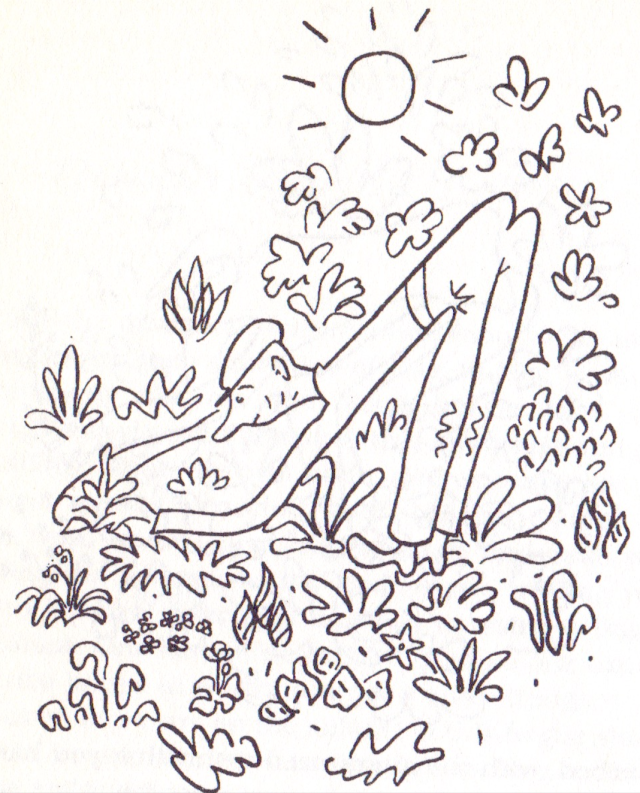
The comical, Thurber-esque line drawings that accompany the text are by the writer’s brother and frequent collaborator Josef. I returned my library copy, and lifted these images from a post on the UK Garden’s Trust blog–which also has a good post with great photos about Marjory Fish’s We Made a Garden.
Much of the humor comes from how the gardener’s grand vision compares to reality. The vision is big. Reality is small. The gardener is an amnesiac or madman, forgetting what failed last time. (This is a trend in garden writing, I’m learning.) Čapek’s gardener is male. In spring, he emerges, like ephemerals. In summer, he mows. Always, he waters. In autumn he spreads manure, “Czechoslovakia’s most important agricultural crop.”
Here is Čapek ’s description of the ritual of bulb planting.
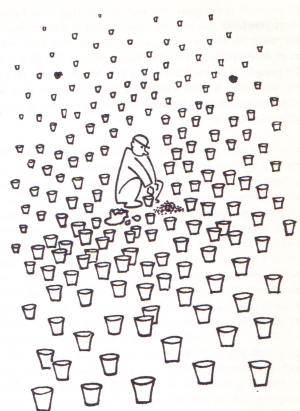
One goes about it like this: you buy the relevant bulbs and a bag of nice compost from the nearest garden centre; after which you look out all your old flower pots in the cellar or attic and put a bulb in each one. Towards the end you find you have still got some bulbs but no flowerpots. So you buy some more flowerpots, whereupon you discover you have not got any bulbs left now but you do have a surfeit of flowerpots and soil. Then you buy a few more bulbs, but because you have not got enough soil you buy a new bag of compost. Then you have got soil left over, which of course you do not want to throw away, and instead buy more flower pots and bulbs. You carry on like this until the people at home forbid you any longer. Then you fill the windows, tables, cabinets, pantry, cellar and loft with them and look forward to the approaching winter with confidence.
One of the gardener’s principal antagonists is the hose:
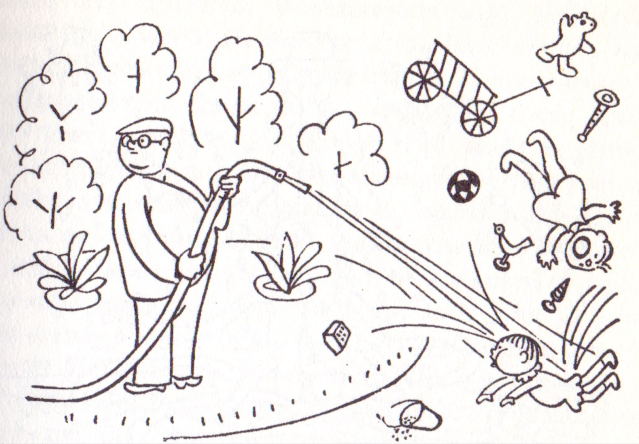
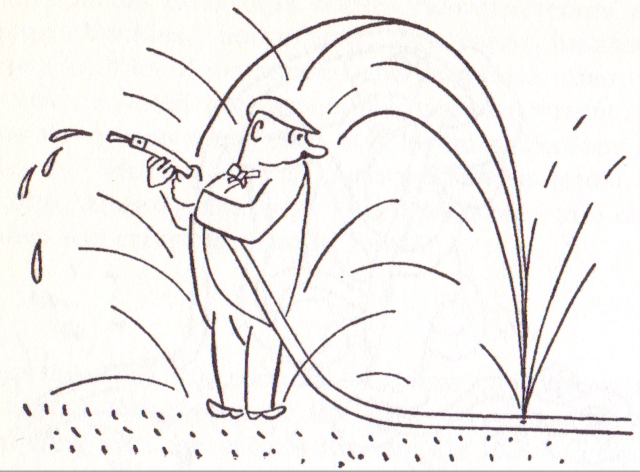
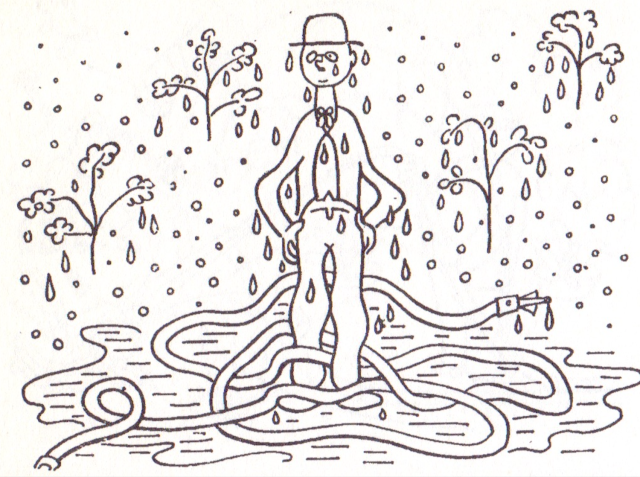
One would think that watering a little garden is quite a simple thing, especially if one has a hose. It will soon be clear that until it has been tamed a hose is an extraordinarily evasive and dangerous beast, for it contorts itself, it jumps, it wriggles, it makes puddles of water, and dives with delight into the mess it has made; then it goes for the man who is going to use it and coils itself round his legs; you must hold it down with your foot, and then it rears and twists round your waist and neck, and while you are fighting with it as with a cobra, the monster turns up its brass mouth and projects a mighty stream of water through the windows on to the curtains which have been recently hung. which have been recently hung… If you do this every day, in a fortnight weeds will spring up instead of grass.
And who among us has not been there? The gardener is always frustrated, but never enough to quit. His experiences merely whet his appetite for more gardening!
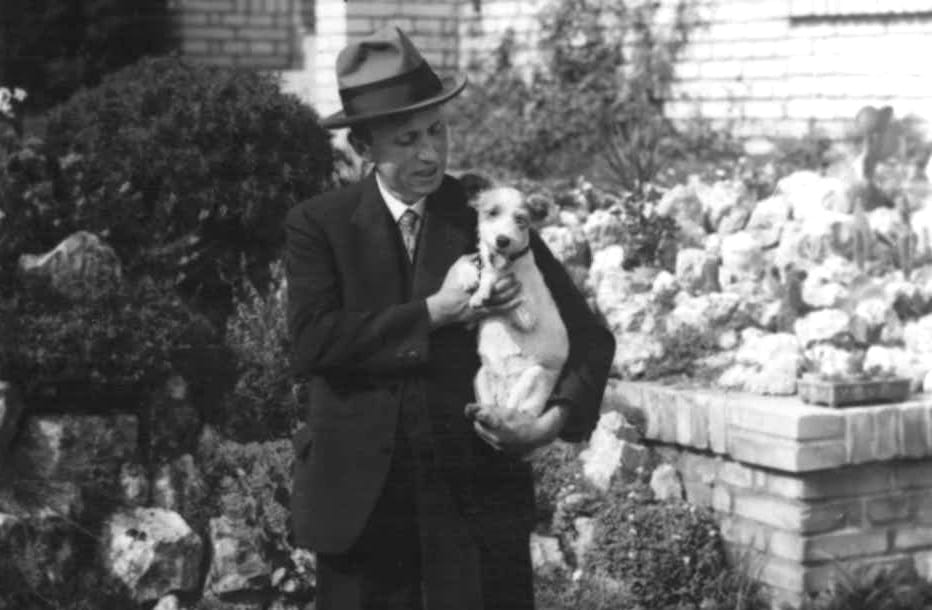
Čapek (pronounced Chupek), was a novelist, playwright, essayist, and journalist prominent in Prague’s cultural scene between the wars. In addition to writing a beloved Czech children’s book called Dashenka the Puppy, Čapek’s 1920 play R.U.R. (in English, Rossom’s Universal Robots) is famous for introducing the term robot. A New York Times reviewer describes another noteworthy title, the novel War with the Newts, as “a funny, bizarre, dystopian masterpiece.”
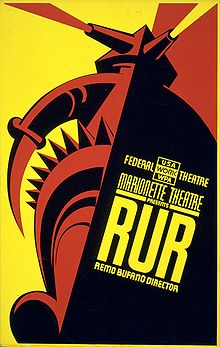
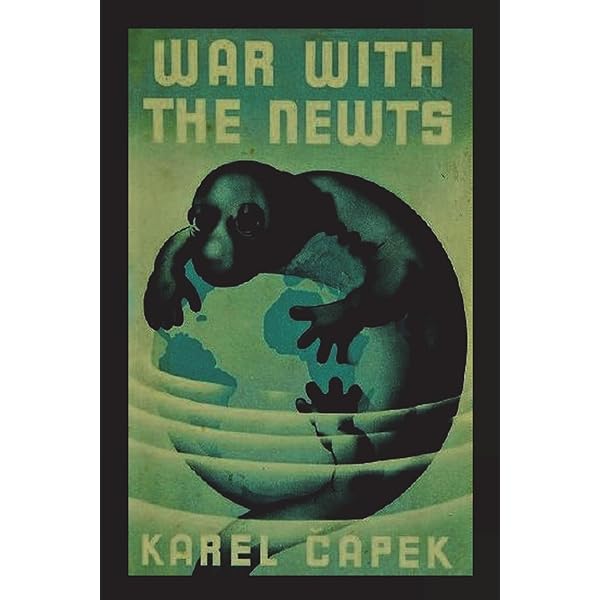
I haven’t read either R.U.R. or War with the Newts, but I understand that both deal with enslaved and exploited populations acquiring knowledge and rebelling. Some see these as criticizing the Nazis. While Čapek certainly abhorred them, I also see some resemblance to his preoccupations in the gardening book. Nature resists subjugation.
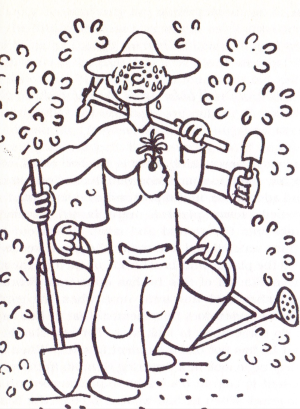
Increasingly anti-fascist, throughout the thirties Čapek hosted weekly salon-type meetings on Friday afternoons in his garden. Attendees, known as Friday men, were influential Czech intellectual and political figures—journalists, critics, and elected officials. The house itself is a “double house,” or duplex. Each brother occupied a side.
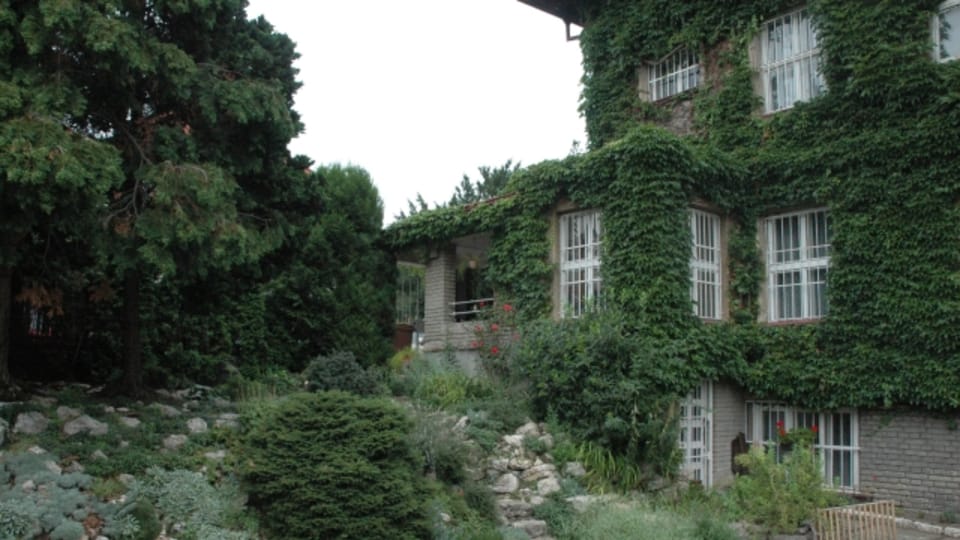
Designed by Czech modernist architect Ladislav Machon, the house is now a museum. Reportedly it’s a time capsule, with furnishings and artifacts exactly they were as during the Čapek brothers’ time. I haven’t been, but the photos on this website offer a glimpse, including the garden and greenhouse: ČAPEK BROTHERS HOUSE. Also, this item from 2020, PHOTO REPORT from Capko Villa: A derelict house awaits reconstruction, shows the condition of the house and garden before restoration.
Both of the brothers Čapek were vocal critics of fascism. Immediately after the Nazis invaded, on September 1, 1939, the Gestapo came to the house to arrest Karel—only to discover that he had died the previous December (of pneumonia, at age 48). They arrested his wife and brother instead. Karel’s wife survived; Josef died in Bergen-Belsen.

In his introduction to the series, Michael Pollan says Karel Capek “relished the human comedy he found in the garden.” Truth. Next I’ll talk about my favorite of the three, Eleanor Perenyi’s Green Thoughts. Thanks for reading!
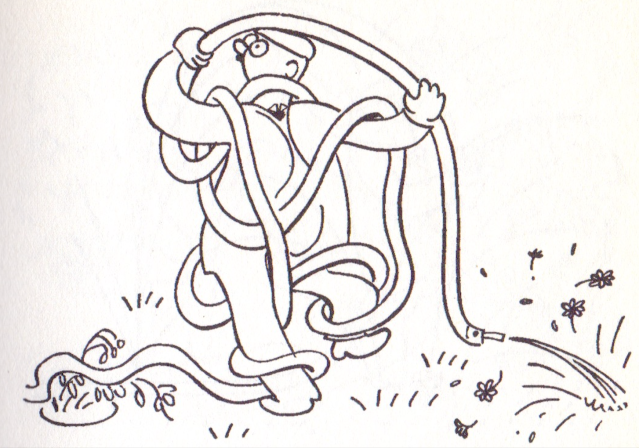
References:
Images from the Garden Trust blog
The Gardener’s Year
“In Praise of Karel Capek” by Ben Dolnick (August 16, 2018)
https://www.nytimes.com/2018/08/16/books/in-praise-of-karel-capek.html
Tour of Čapek brothers’ house (Richard Hodonicky)
https://richardhodonicky.exposure.co/capek-brothers-house
PHOTO REPORT: A derelict house awaits reconstruction
Wikipedia’s Brothers Čapek entry
https://en.wikipedia.org/wiki/Brothers_%C4%8Capek